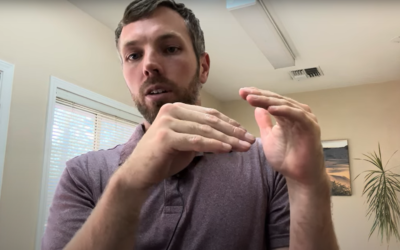Here are 5 tips for getting into foam rolling or improving some of your foam rolling habits.
Tip 1: Things not to do. Generally speaking, I would recommend against doing foam rolling perpendicular to your low back. The foam roller is usually too thick and cause hyper extension or excess back bending at a focal area in the low back. I would recommend using a tennis ball or what some call a peanut to be able to get some relief in the low back muscles without causing that excess movement in the low back spine area.
Tip 2: Things not to do. Don’t foam roll over exposed or shallow bone areas. An easy example is the hip. The top of the femur, of leg bone going into the pelvis, has a lot of muscles coming into that area, which is great to foam roll, but rolling over the hard bone part, is usually painful and ineffective.
Tip 3: There are a lot of different ways to go about your foam rolling routine. But for starters, I recommend going through a “seek and destroy” concept. For example, if I were to roll my hamstrings, I will seek for that most tender spot and try and find the middle of that spot. Then I will stay on the spot for 2-3 deep breathes, 5-10 seconds, and then move on the next tender spot that you can find. Then as a whole, work on the muscle group for about 1 minute or so before moving on.
Tip 4: Breathe. This is a common problem I see. If I find a tender spot and I just keep putting pressure on it, clenching my teeth in agony, there is no way that those muscles are relaxing. This would be like taking a rope with a knot in it and then pulling it tighter, the knot doesn’t come out. So if you find that tender spot and you can’t breathe, take some pressure off by sitting down or letting your foot or arm take some pressure off the area so that you can at least breathe. Breathing is huge with this and “no pain no gain” doesn’t really work here. There is going to be some discomfort, but if you can’t breathe, that’s too much.
Tip 5: Get creative. Foam rolling is nothing super complicating. One of my favorite things to do with a foam roller is laying on it parallel with my spine and just relaxing in this position. This will give you some stretching in the chest and some extension in the upper back. This is basically counteracting what you are doing all day if you are sitting at a desk. It is surprisingly relaxing and puts your back and shoulders in a good position.
Here are your tips for foam rolling and the best time to do foam rolling would usually be after exercise since your muscles are nice and warm and try and work out some of those tight spots before they get worse.
Tahoe’s Premiere Sports Chiropractor
Follow us on
Facebook https://www.facebook.com/summittoshore/
Instagram https://www.instagram.com/summittoshore/





